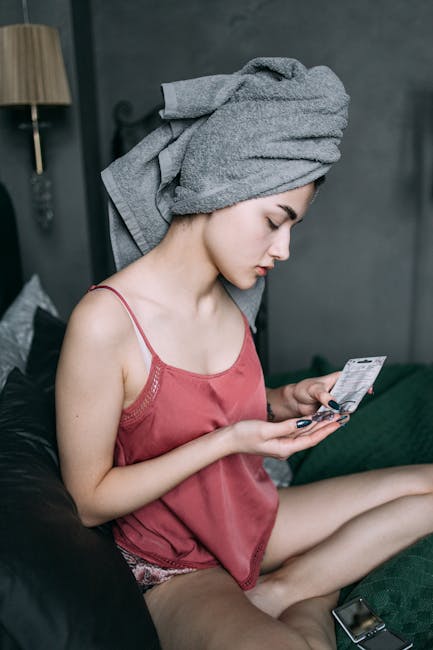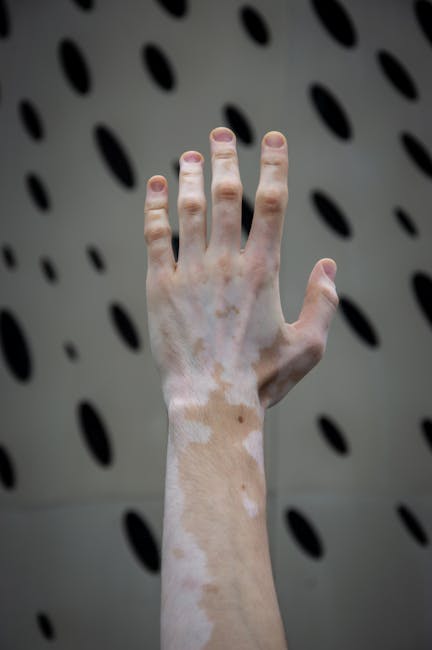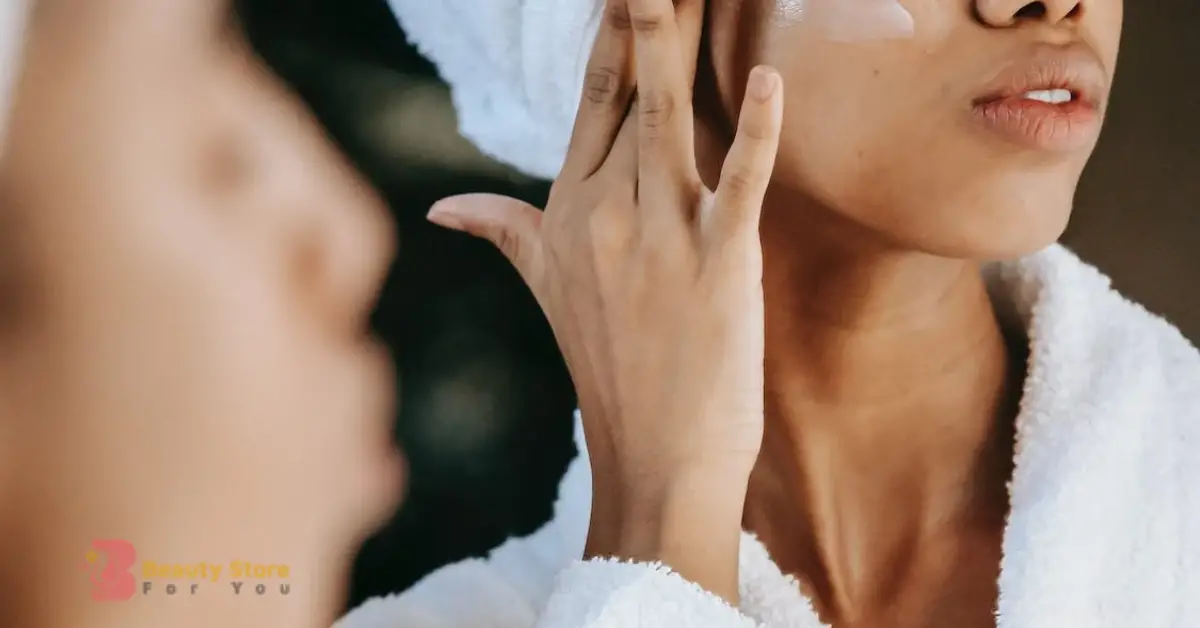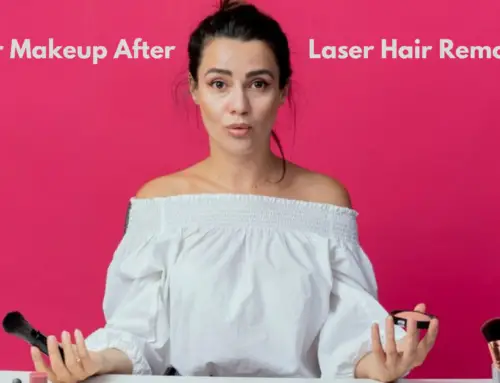Do you ever feel like your skincare products aren’t working as effectively as you’d like? Well, let me introduce you to a phenomenon called “pilling skincare.”
So, what exactly is pilling skincare? It’s when your moisturizer, sunscreen, or other skincare products start to clump or ball up on your skin instead of absorbing properly. It’s frustrating, right?
But don’t worry, in this article, we’ll explore why pilling happens, how to prevent it, and the best products to use to avoid this pesky issue. Let’s get started!
What is Pilling Skincare: A Comprehensive Guide to Understanding the Phenomenon
Welcome to our in-depth guide to pilling skincare! In this article, we will explore the concept of pilling skincare, which has been gaining popularity in the beauty industry. Pilling refers to the unsightly clumps or balls that are formed when certain skincare products are layered on top of each other. We will delve into the causes of pilling, solutions to prevent it, and tips for achieving a smooth and flawless skincare routine. So, let’s get started on our journey to uncover the mystery behind pilling skincare!
The Science Behind Pilling Skincare
Understanding the science behind pilling skincare is crucial to finding effective solutions. Pilling occurs when the formulation and order of application of skincare products do not complement each other. This phenomenon is primarily caused by a mismatch of product textures and specific ingredients within the formulations. For example, using a water-based product followed by an oil-based product can cause pilling due to the incompatible nature of these textures.
Another contributing factor is the presence of certain ingredients, such as silicones or powders, that create a film or residue on the skin’s surface. This residue can lead to friction and clumping when other products are applied. Additionally, excessive product application, rubbing, or layering can all exacerbate pilling. To combat this issue, it is essential to understand the ingredients and textures of your skincare products and apply them in the correct order.
The Role of Product Textures
The textures of skincare products play a significant role in the occurrence of pilling. Product textures can range from thin and watery to thick and creamy. When layering products, it is essential to consider the compatibility of their textures. Mixing products with opposing textures, such as a thick cream and a watery serum, can create a breeding ground for pilling. The difference in viscosity can cause the products to separate and form clumps on the skin.
To prevent pilling, it is crucial to follow a general rule of thumb: apply products in order of their textures, from lightest to heaviest. By doing so, you allow each product to absorb into the skin before applying the next, minimizing the risk of clumping. Additionally, gently pressing or patting the products into the skin, rather than rubbing or vigorously massaging, can help to minimize friction and prevent pilling.

Tackling the Ingredient Puzzle
Understanding the ingredients within your skincare products is key to preventing pilling. Certain ingredients, like silicones or powders, can create a barrier on the skin’s surface, causing other products to clump. Similarly, products containing high levels of oils or emollients can be prone to creating pilling. It is important to note that individuals may react differently to certain ingredients. Thus, experimentation with different product combinations and ingredient lists may be necessary to find the best routine for your skin.
To determine if certain ingredients are causing pilling, start by analyzing the formulas of your products. Look for common culprits like dimethicone, talc, or zinc oxide. If these ingredients are present in multiple products within your routine, try eliminating or replacing them to see if the pilling subsides. Additionally, consider seeking out products that are specifically designed to work well together to minimize the chance of pilling.
4 Tips to Prevent Your Products From Pilling!
Pilling Skincare: Practical Tips for a Smooth Routine
Now that we have explored the science behind pilling skincare, let’s delve into some practical tips to help you achieve a smooth and flawless routine. By following these guidelines, you can minimize the occurrence of pilling and optimize the effectiveness of your skincare products:
1. Start with a Clean Canvas
Before applying any skincare products, it is essential to start with a clean and freshly washed face. Cleansing removes any dirt, oil, or residual products from your skin, creating a clean canvas for your skincare routine. Excess oils or residue can increase the likelihood of pilling, so ensure that your skin is thoroughly cleansed before proceeding.
2. Use Products with Complementary Formulations
When choosing your skincare products, opt for formulations that are designed to work well together. Brands often create ranges or lines that are specifically curated to complement each other, minimizing the risk of pilling. Look for indications or recommendations from the brand regarding the compatibility of their products or seek advice from skincare professionals for guidance.
3. Apply Products in the Correct Order
The order in which you apply your skincare products can significantly impact the likelihood of pilling. As a general rule, start with the lightest textures, such as toners or essences, and gradually move towards thicker textures, like moisturizers or oils. This allows each product to absorb into the skin before applying the next, reducing the risk of clumping. If in doubt, consult the specific instructions provided by the brand or seek professional guidance.
4. Be Mindful of Quantity
Using excessive amounts of product can lead to pilling, as it can create a build-up of layers that struggle to absorb into the skin. It is important to apply the appropriate amount of each product, as recommended by the brand or as guided by skincare professionals. A little goes a long way, and applying too much can be counterproductive and increase the chances of pilling.
5. Gently Pat or Press Products into the Skin
When applying skincare products, avoid rubbing or vigorously massaging them into the skin, as this can create friction and lead to pilling. Instead, use gentle patting or pressing motions to ensure the products are absorbed without disturbing the layers beneath. This minimizes the risk of clumping and maintains a smooth application.
6. Allow Sufficient Time for Absorption
Patience is key when it comes to skincare. Allow each product sufficient time to absorb into the skin before applying the next. This can range from a few seconds to a minute, depending on the product’s texture and absorption rate. Rushing the application process can lead to pilling, so take the time to ensure each layer is fully absorbed.
7. Experiment and Adapt
Skincare is a personal journey, and finding the perfect routine takes time and experimentation. Be open to trying different product combinations, textures, and ingredients to find what works best for your specific skin type and concerns. Adjust your routine as needed and don’t be afraid to seek advice from skincare professionals if you are struggling with pilling.
Extra Measures for a Pilling-Free Experience
In addition to the above tips, there are a few extra measures you can take to further prevent pilling and ensure a smooth skincare experience:
1. Gentle Exfoliation
Dull and uneven skin texture can contribute to pilling. Regular exfoliation can help remove dead skin cells and promote a smoother canvas for product application. Opt for gentle exfoliators that suit your skin type and use them as directed or recommended by skincare professionals.
2. Consult Skincare Professionals
If you are struggling with persistent pilling issues or need personalized advice, consider consulting skincare professionals such as dermatologists or aestheticians. They can analyze your skin, recommend suitable products, and provide guidance on layering techniques to minimize pilling.
3. Consider the Use of Primer
If pilling continues to be an issue despite following the above tips, consider incorporating a makeup or skincare primer into your routine. Primers help create a smooth base for makeup, but they can also be beneficial in preventing pilling by creating a barrier between incompatible product textures.
In conclusion, pilling skincare can be frustrating but with the right knowledge and approach, it can be mitigated. By understanding the science behind pilling, making informed product choices, and following proper application techniques, you can achieve a smooth and effective skincare routine. Remember, experimentation and adaptation are key to finding what works best for your unique skin needs. So, go forth and conquer pilling for a flawless skincare experience!

Key Takeaways: What is Pilling Skincare?
- Pilling in skincare refers to the formation of small balls or clumps on the skin’s surface.
- It occurs when different product formulas or ingredients don’t blend well together.
- Pilling can be caused by using too many products or applying them too quickly.
- To prevent pilling, let each product fully absorb before applying the next one.
- Choose skincare products with compatible formulas to minimize the chances of pilling.
Frequently Asked Questions
Welcome to our FAQ section on skincare pilling! Here, we’ll provide answers to some common queries about pilling and its impact on your skincare routine.
How does pilling occur in skincare?
Pilling in skincare occurs when product residues, dead skin cells, or other particles build up on the surface of the skin. When you apply subsequent layers of skincare products, these particles can get caught or rolled up, leading to the formation of little balls or flakes known as pills.
Pilling can also be caused by certain ingredient combinations or improper application techniques. It’s important to note that pilling is not usually a sign of a faulty product, but rather a result of product-layering or other external factors.
Does pilling affect the effectiveness of skincare products?
No, pilling does not typically affect the effectiveness of skincare products. However, it can make it difficult for subsequent products to penetrate the skin properly, resulting in reduced absorption and efficacy. Additionally, pilling can create an uneven texture and appearance, making it challenging to apply makeup smoothly.
To ensure optimal results, it’s ideal to minimize pilling by allowing each layer of your skincare routine to absorb fully before applying the next product. If you experience excessive pilling, consider adjusting the order of your products or using lighter-textured formulas to avoid product buildup.
Can pilling be prevented?
While it may not be entirely preventable, there are steps you can take to minimize pilling in your skincare routine. Start by applying a small amount of each product and gently massaging it into the skin to encourage absorption. Give each product sufficient time to fully absorb before proceeding to the next step.
It’s also important to consider the texture and consistency of your skincare products. Mixing products with significantly different consistencies, such as a thick cream and a watery serum, can increase the likelihood of pilling. Additionally, using too much product or applying multiple layers unnecessarily can exacerbate the issue.
Is pilling a sign of using too many products?
Pilling can sometimes be a sign of using too many products or not allowing the skin enough time to absorb each layer. If you find that your skincare routine involves multiple heavy or occlusive products that contribute to pilling, consider simplifying your routine.
Focusing on the essentials and choosing products with lighter textures can help minimize pilling. Identify which skincare steps are most important for your skin concerns and prioritize those, rather than layering excessive products that may not offer significant benefits.
Can certain ingredients cause pilling?
Yes, certain ingredient combinations can contribute to pilling. Ingredients like silicones, heavy oils, or high concentrations of active ingredients can create a slippery or tacky surface on the skin, making pilling more likely. Additionally, certain emulsifiers or thickeners used in skincare formulations can also affect product compatibility and increase the chances of pilling.
If you consistently experience pilling with specific product combinations, it may be worth reviewing the ingredient lists of your skincare products and identifying potential ingredient clashes. Experimenting with alternative products or adjusting the order of application can help reduce pilling caused by incompatible ingredients.
Summary
Pilling skincare happens when dead skin cells and product build-up form small balls on the skin’s surface. These tiny balls can make your skin look rough and uneven. To prevent pilling, it’s important to exfoliate regularly and apply products in thin layers, giving each one enough time to absorb. Also, using the right combination of products that are compatible with each other can help minimize pilling.
Pilling can be frustrating, but with the right skincare routine, you can reduce its occurrence. Make sure to read the instructions on your skincare products and follow them correctly. Remember to exfoliate, apply products one at a time, and give them time to absorb. By taking these steps, you can achieve smooth and even-looking skin without those pesky little balls.






Leave A Comment